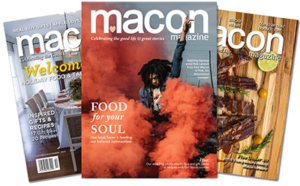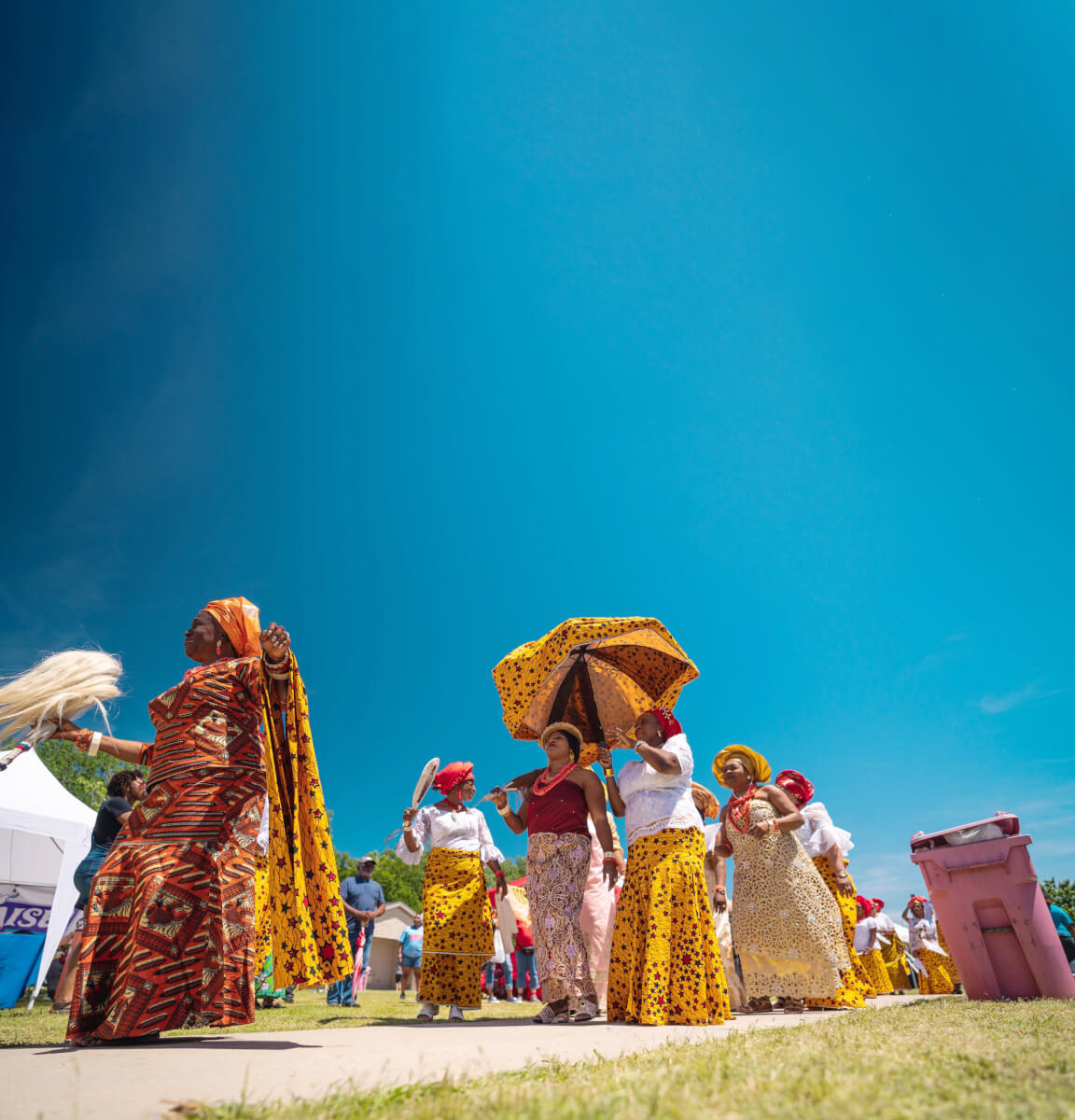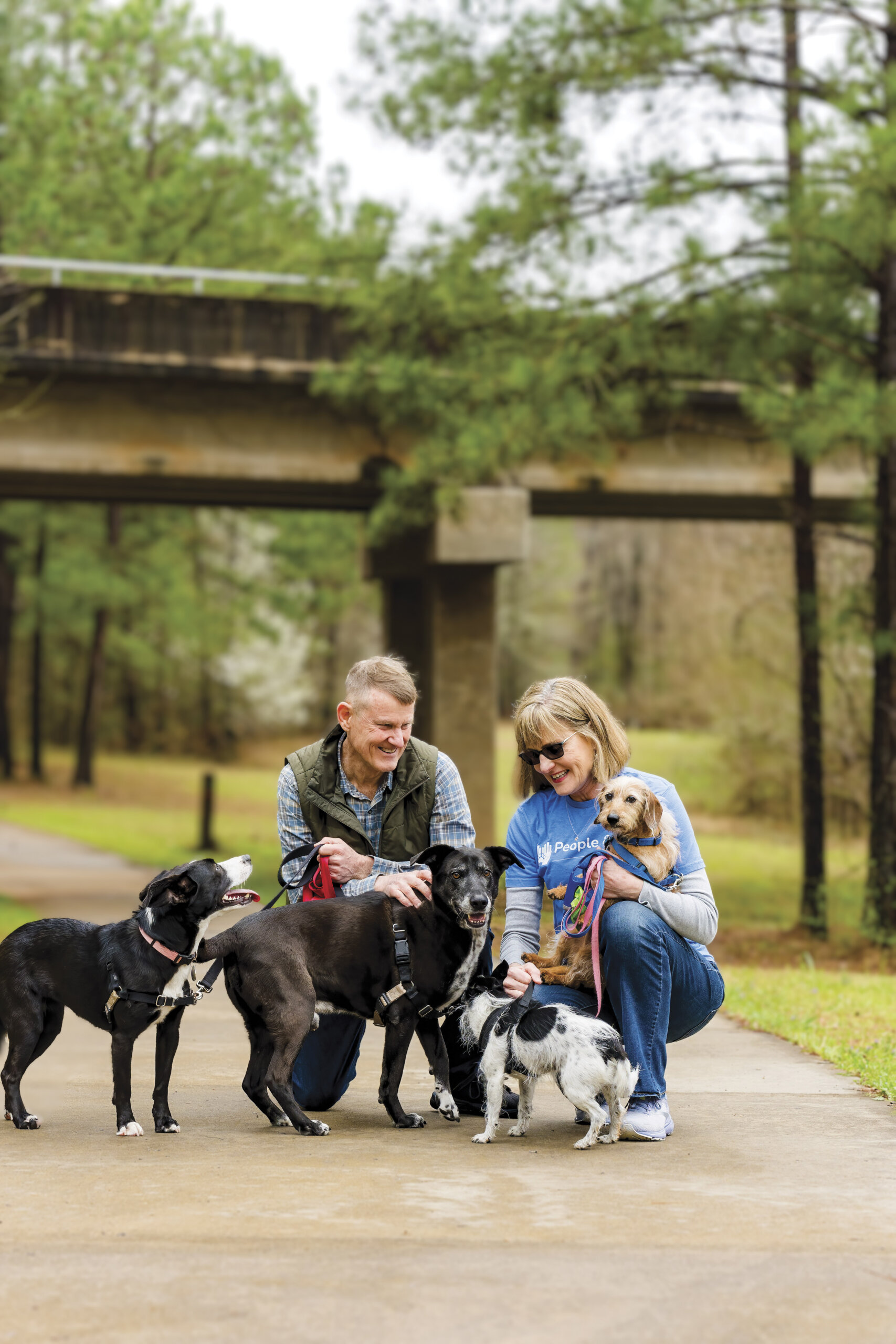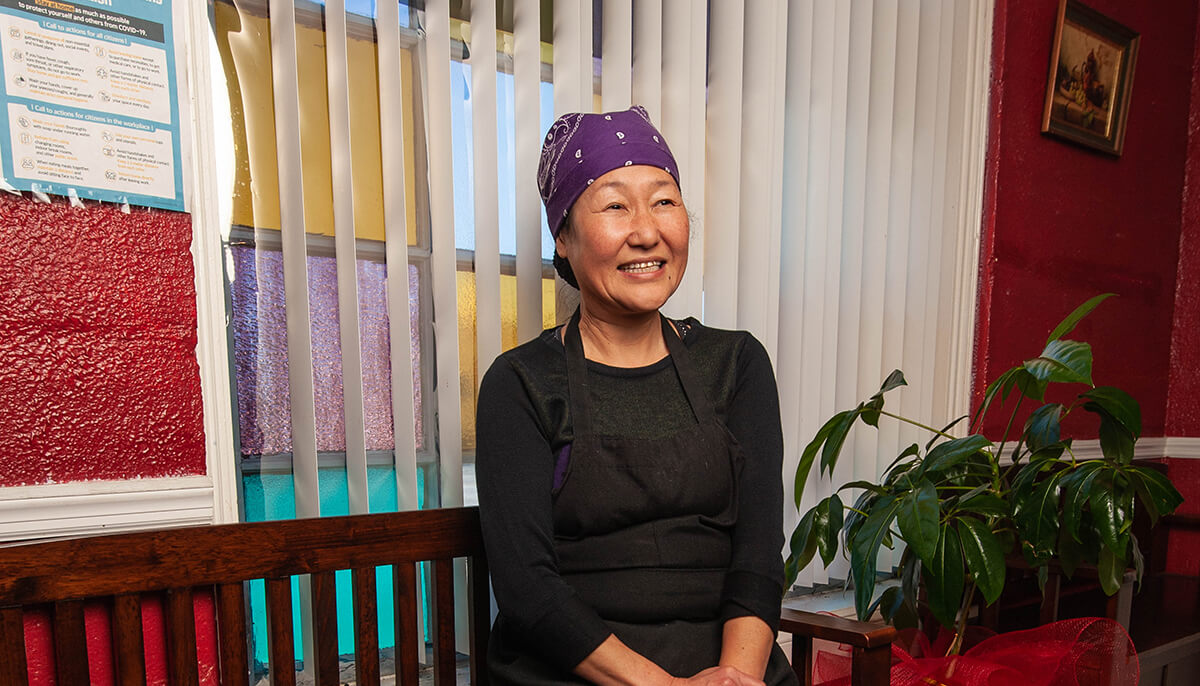
How One Woman Made Downtown Macon A Kimchi Destination
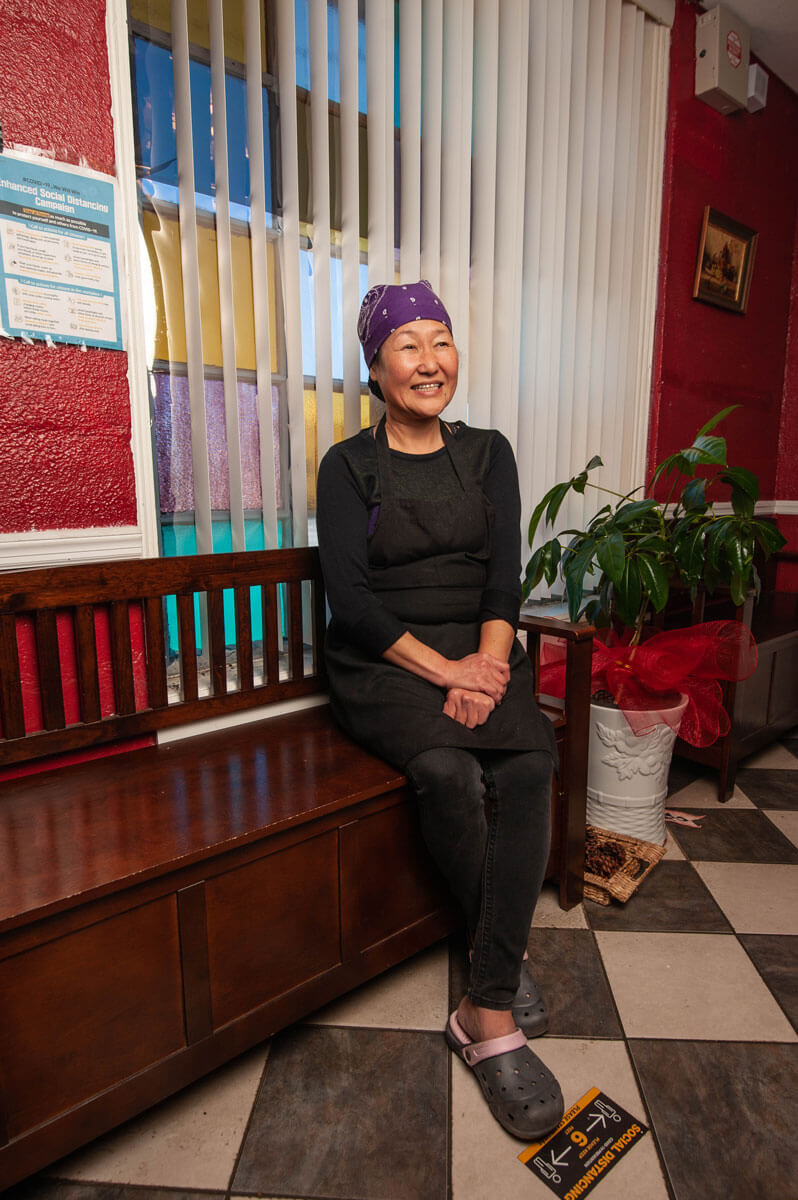
How One Woman Made Downtown Macon A Kimchi Destination
by Sierra Stark Stevens
photo above by DSTO Moore
This January, we shared a cozy booth with Miyang Rutherford, proprietor of Kimchi Factory. She opened the restaurant in 2020 in the old Len Berg’s location on Walnut Street. Her story spans two continents and more than half a century—from learning to cook from her mother in Gwangju, South Korea, to immigrating to Mississippi, then Atlanta, and becoming a mother to five girls. In Macon, she turned hardship into compassion, delicious food, and fulfilling relationships with her community, her customers, and most of all, her daughters.
MIYANG RUTHERFORD grew up in southwestern South Korea in a region as famous for its kimchi as its strong women (like nearby Jeju Island’s female free divers). For those who haven’t tried it, kimchi is chili-spiced, fermented vegetables, often cabbage. With her large family of six brothers, and therefore, a mother who never stopped cooking, her upbringing in Gwanju gave Miyang all the culinary training and inner strength she’d need for the path she would ultimately trek as proprietor of one of Macon’s most delicious restaurants: Kimchi Factory.
THE THOUSAND WAYS OF KIMCHI
Growing up, Miyang’s mother, Poksun Na, never pushed her daughter to cook, but Miyang always marveled at the process. “When my mother cooked something, I was always next to her. She explained every seasoning and let me taste things at every stage.” Going back another generation in turn, Miyang’s mother had learned from her grandfather. A hanyak (Korean herbal medicine) practitioner, he trained Poksun to recognize and use different herbs and preparation methods to treat a variety of physical complaints, from high blood pressure and arthritis to labor pains. “He knew the medicine of the earth, of the mountain,” Miyang said. “I cannot get all of those ingredients here in the United States, but I remember them, and I can still make healthy, tasty food.”
Her metropolitan childhood home of Gwanju rests at the base of Mount Mudeung. From its peak on a clear day, you can see the islands of Jeju and Geojedo in the Yellow Sea to the west, two of nearly 2,000 sparsely-populated islands that dot the coastline. To the east, the densely forested Mudeungsan region of the Sobaek mountain range creates countless microclimates, resulting in a rich biodiversity of plant and animal species, beforefalling away to the lowlands. The variety of foods– seafood on the coast, rare mountain herbs, wild rabbits in the foothills, freshwater fish in the streams– led to profound culinary diversity. The shallow, rocky soil and harsh climate (hot, stormy summers and freezing, dry winters) lead to food scarcity in winter, driving a need for food preservation – and so, a thousand, thousand kimchi variations were born. And Miyang grew up tasting it all.
“Most people in Gwanju, they know how to cook. And there are as many ways to make kimchi as there are people – more than that. Every family made five or six kinds of kimchi every November. The people on the coast used lots of seafood. We were closer to the mountains, so my brothers hunted and fished in the streams. I loved when they came home with ducks.”Her family preserved that game and vegetables like cabbage and radishes as kimchi, using the traditional method of clay pots buried in the earth to regulate the temperature and airflow, resulting in a fermentation that could preserve foods for three or four years – in some cases, much longer. “Kimchi is like wine or cheese,” Miyang said. “Its flavor grows with age.” While she hasn’t found a Central Georgia location with the right temperature and humidity for those complex kimchi types yet, she imagines a future with a vast cave in Georgia holding these clay kimchi jars, which she can export back to Korea, whose rapid industrialization is leading to a loss of these heritage foodways, Miyang opined.
IMMIGRATING, MOTHERHOOD, AND THE ROAD TO MACON
But in her early twenties, she couldn’t envision her future. In Korea, she felt her only option was marriage, and she wasn’t ready to marry. So, at 27, she came to the States to see what her life might be. Three months after immigrating in 1997, a hit-and-run car wreck nearly killed her in Mississippi. Nursing emergency hip replacement and restructured pelvic bone, she sought community in Atlanta, where she was welcomed into a tight-knit Korean Christian fellowship. Shortly after, she entered her first marriage, and over the next 15 years, she had five daughters: Charmaine, Pillju (Joyce), Seungju (Sunny), Heaju (Grace), and Yeju (Esther). Miyang described this period of her life as “a lot of tears, a very hard time,” due to an uneasy marriage, homesickness, and the physical toll of five pregnancies and births with a pelvis that had been cracked in half.
Yet, it was also a time of great joy and inspiration. “Each of my daughters, she is a miracle,” said Miyang. “All my life, I was the only girl. I had all brothers, remember? With each baby, I felt such joy, like Jesus had saved up daughters for me.” She prayed most during her pregnancies, she said, asking Jesus for health and a vision for a life that would bring them all joy. As many of the countless hours as Miyang spent praying, she also spent recreating the flavors of home, cooking in her church fellowship hall and at the Kia factory in West Point, Georgia, where she worked in the cafeteria. “I spent so much time learning and making the kimchi, and people started to really like it and to ask for it. Over the years, I started to ask myself, ‘What is the difference between other kimchi and mine?’” she recalled. The answer is clear, she believes. “It’s that I’m so happy when I make it. I’m never so happy as when I am making food and sharing hospitality with another person. It doesn’t matter whether I have money or not.
“After my youngest daughter, I was 42. My hip was not in good shape. My doctor said, ‘Miyang, you have to close your daughter factory,’” she recalls, chuckling at the well-received joke.
“But by that time, Jesus had given me my vision,” she said, her tone growing bright. “My Kimchi Factory.”
CHERRY BLOSSOMS AND OLD LEN BERG’S
She just needed to find the right location for that vision. Initially, she had planned to open her restaurant near the Kia factory, where she already had a clientele. In the meantime, she began catering out of her home, making kimchi and dumplings. A difficult divorce set her back. “After the divorce, I felt like I had lost everything. My husband wanted to bring our daughters with him to Macon. I knew I could never be so far from them,” she continued. Feeling lost once more, she decided to drive down to Macon ahead of the move. “As soon as I get off I-75,” she said, “I feel my heart start beating, beating, beating. Beating faster and stronger, you understand?” As she spoke, Miyang paused and placed her hand over her heart, where her apron string was tied, tears shining bright beneath the bright purple bandana wrapped tight around her head. The other hand trembled around her steaming teacup. Even in this emotional moment, she paused to refill our tea.
“Beating like it was coming alive,” she said. “Like a cherry blossom in the wintertime. The tree has lost, poured down all its leaves. But coming to Macon, my heart became like the tree in the springtime. Beating, beating, little living green things coming back. The blossoms coming back. I just knew that Jesus had chosen this place for me and my family, for my business, my mission.”“[Macon] has so much history, like the beautiful train station, and it was like me [in that] it had seen some hard times. But I saw how it was growing and changing and getting stronger. I knew this was the place.”Over the next few years, Miyang took a job in the Kumho Tire factory in South Macon and spent most of her free time driving the city, looking for a building for her restaurant. It was a long search, but she never lost the feeling that Macon was her destiny. One day, her landlady, a fellow Korean and friend from church, asked Miyang to come see one of her commercial properties: the old Len Berg’s on Walnut Street.
Once a meat-and-three, the building had seen heavy service for nearly a century, then laid untouched for years, as few saw the attraction of a squat building hidden in a parking lot — behind an aging dry-cleaner, an extended-stay hotel, and the bricked-over rear windows of the otherwise attractiveBootle Federal Building and Courthouse.“It looked terrible,” she admitted. “But I felt something. I thought, could this finally be the place?”After a deep breath, Miyang asked her landlady, “When can I start?”
THE NEW FACTORY OPENS
It took two and half years to clean up the old place and turn it into the warm, glowing-red maze of cozy dining rooms that Miyang delights in today, a place full of memories with her daughters, who have helped her every step of the way; two still work at the restaurant with her. But, by the time the restaurant was almost ready to open, the pandemic struck. Miyang waited as long as she could, but by summer 2020, time was running short on a financial return. “Finally, I had to just set a date and pray it would be okay,” she recalled. “I said,‘July 6, and come what may.’”That first day nearly four years ago, only two customers came – and one was the mechanic who repaired the air conditioner. Miyang sent him home with a free meal. But the next day, the media arrived, and thanks to viral word of mouth and a short interview that Miyang had no idea was live, within hours, there was a line snaking all the way through the parking lot to the street. They served over three hundred people on day two.“Me, my daughters, all the employees, we did not even have a chance to go to the bathroom, could not even eat a single piece of candy. It was hard even to breathe,” she remembered. “But I was so happy, so proud.”
A SPECIAL RELATIONSHIP WITH MACON
Over the past four years, business has ebbed and flowed, but never wavered. “It’s not easy to run a restaurant,” she said. “Staffing is difficult, prices are always changing, and it can be hard to get the ingredients you need. Opening during COVID-19 was a big, big challenge. Plus, I make mistakes,” she says, the weight of sole business ownership clearly on her brow. “But here I have so many people looking out for me, so many people helping me.”
There’s no place she’d rather have her restaurant than in Macon, she insisted. “One thing that is special about Macon is my customers here. They always pray for me, they cheer me up, they worry about me. They are wonderful customers — so patient. When they come eat, it is not just like a customer and the owner. We have a special relationship.
FUTURE FACTORIES
Miyang hopes those relationships will continue to grow along with her business. What’s next for her? She wants to franchise, spreading healthy food made with love even further. After all, she’s a Macon institution now, with her business featured in publications like Garden and Gun and Forbes. “People ask me, why don’t you start selling autographs?” Miyang said, shaking her head. “But this is not my glory. It’s not mine; it is for everybody that was there for me. Every day is a miracle, and I am just so grateful, so happy.
When you go, try the Kimchijeon (scallion pancakes),hot-stone bibimbap with squid, the kimbab (rice, veggie, and crab seaweed roll served warm), and, of course– some of the namesake kimchi that won Miyang her fame. Don’t forget the fresh-from-Korea chrysanthemum and preserved lemon teas

